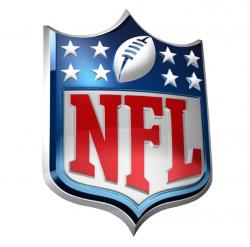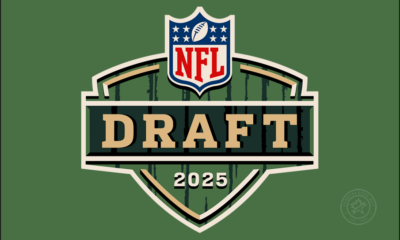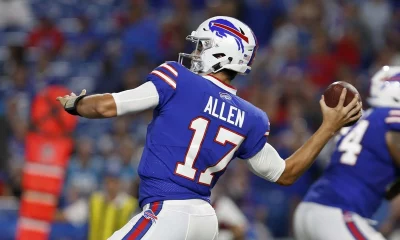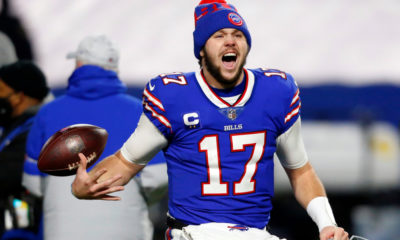
NFL-Fatties are taking longer to be ready
Watching many games these first two weeks of the season, there was one evident recurrence: all the big men, especially on DL and OL looked spent by the 4th quarter.
Sure this is to be expected, as I am sure it has happened before, but I think this is a problem that may be revisited by teams after this season. Let me give you a little background:
Here is a list of size transition dating back to 1970:
Players like Reggie White played defensive tackle at 257 pounds, across from centers weighing 240 or 250 pounds and guards who were considered huge if 265. Last year’s Super Bowl featured defensive tackles B.J. Raji (337 pounds) and Casey Hampton (330 pounds) versus guards Chris Kemoeatu (344 pounds) and Josh Sitton (318 pounds). Either guard would have steamrolled Randy White as if he wasn’t there.
The Problem:
The latest collective bargaining agreement has changed the way these guys practice
- Gone are the grueling two-a-day practices that have long been a staple of training camps. In their place, teams are able to conduct one full-contact padded practice per day accompanied by a walkthrough period.
- The league has also placed limits on the number of full-contact padded practices during the regular season. Teams are permitted a total of 14 for the year with 11 of those practices conducted during the first 11 weeks of the season (a maximum of one per week).
- For teams like the Steelers, Ravens, these changes have changed their identities; these teams built on physicality and aggressiveness. The loss of full-contact practices has robbed them of the edginess that allows them to bully opponents.
What has suffered:
- Shoddy tackling without full-speed contact drills on a consistent basis has been evident. Although defenders have spent years crafting their skills, the game pace requires players to work on proper angles and tackling fundamentals regularly, in pads, against other players.
- Running game. From an offensive standpoint, the lack of hitting has hurt run-heavy attacks without the benefit of intense nine-on-seven drills that focus on execution. To be successful on the ground, offenses must own the line of scrimmage and generate consistent push. This requires the offensive line to move defenders off the ball. While elements can be simulated without pads, the best rushing attacks sharpen timing and execution by pummeling scout team defenders in a series of brutal team sessions.
- The Passing game. Teams are finding it challenging to refine pass protection under the current circumstances. Offenses have limited opportunities to work against pressures in live contact blitz periods. This will lead to more miscues and blown assignments in protection, which has resulted in quarterbacks taking a pounding. With blockers unable to learn how to handle the speed, strength and power of attacking defenders through repetition, building up the necessary toughness to win physical confrontations has become an issue.
The league has modified the practice rules to provide a safer environment for players, but the changes have had a significant impact on the game.
Let’s back it up to my original point. We have witnessed huge comebacks so far; perennial powerhouses look spent in the 4th quarter. These rules were supposed to help injuries, have they really? Or have they created new ones?
My biggest concern, one that I really believe will have coaches rethink pre-season, is the amount of time the so-called “fatties” actually play in those 4 games. Most of these guys are not in game shape when week 1 comes around. Teams like the Patriots will never admit to this, but that game in Miami had their OL, DL gasping for air because of the humidity and heat; add to that the fact that they looked out of shape, especially because Belichick doesn’t like to play them too much in pre-season, and you have a problem. Defensive Lines have a distinct advantage, most DC rotate them in and out of plays, keeping them fresher; whereas, a good OL usually plays the same 5 all game long. Going back to Mr. Belichick in New England, this season he has rotated OL in both games all game long. Why? Some are saying that they miss Mankins, or that he is not happy with the play of some. He may not be very happy with some players, but I think the truth is, these guys are not in game shape yet, do to the lack of hitting in pre-season. I am sure that in the next week or two, the Patriots will have 5 established starters. Belichick knows that only a steady 5 man line can assure crisp and clean plays every time.
On the flip side of the Patriots we have the Bills, who played 5 pre-season games. Did that extra work for the fatties help a good early start to the season?
These boys are bigger than ever, and their body requires even harder workouts to get in “game shape”, instead those have been taken away. I bet that eventually we will see stats that may show fewer concussions, but much longer injury reports.
How well coaches have adjusted maybe be playing a role in early wins-losses and will ultimately determine which teams emerge as contenders.























Facebook
Twitter
RSS